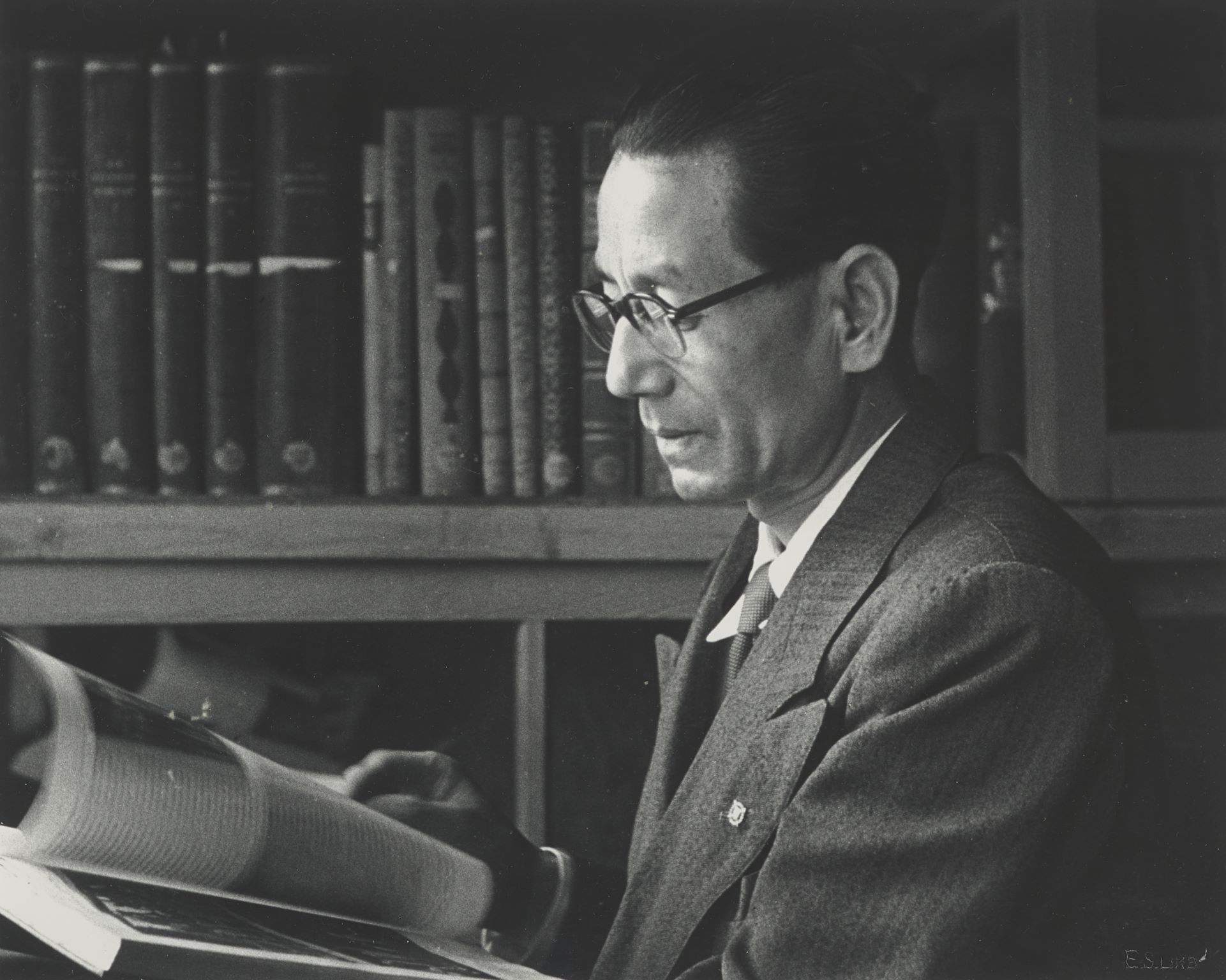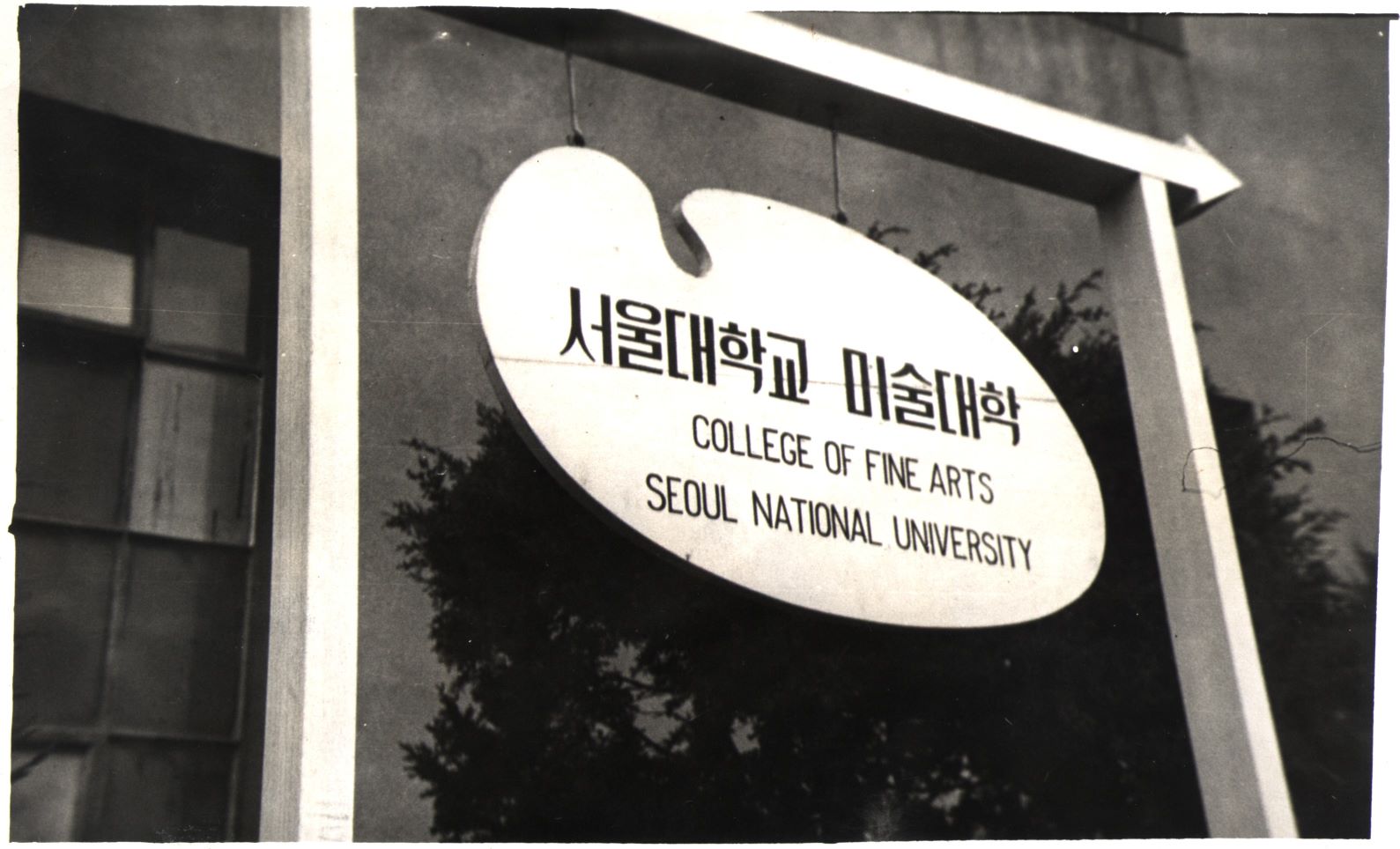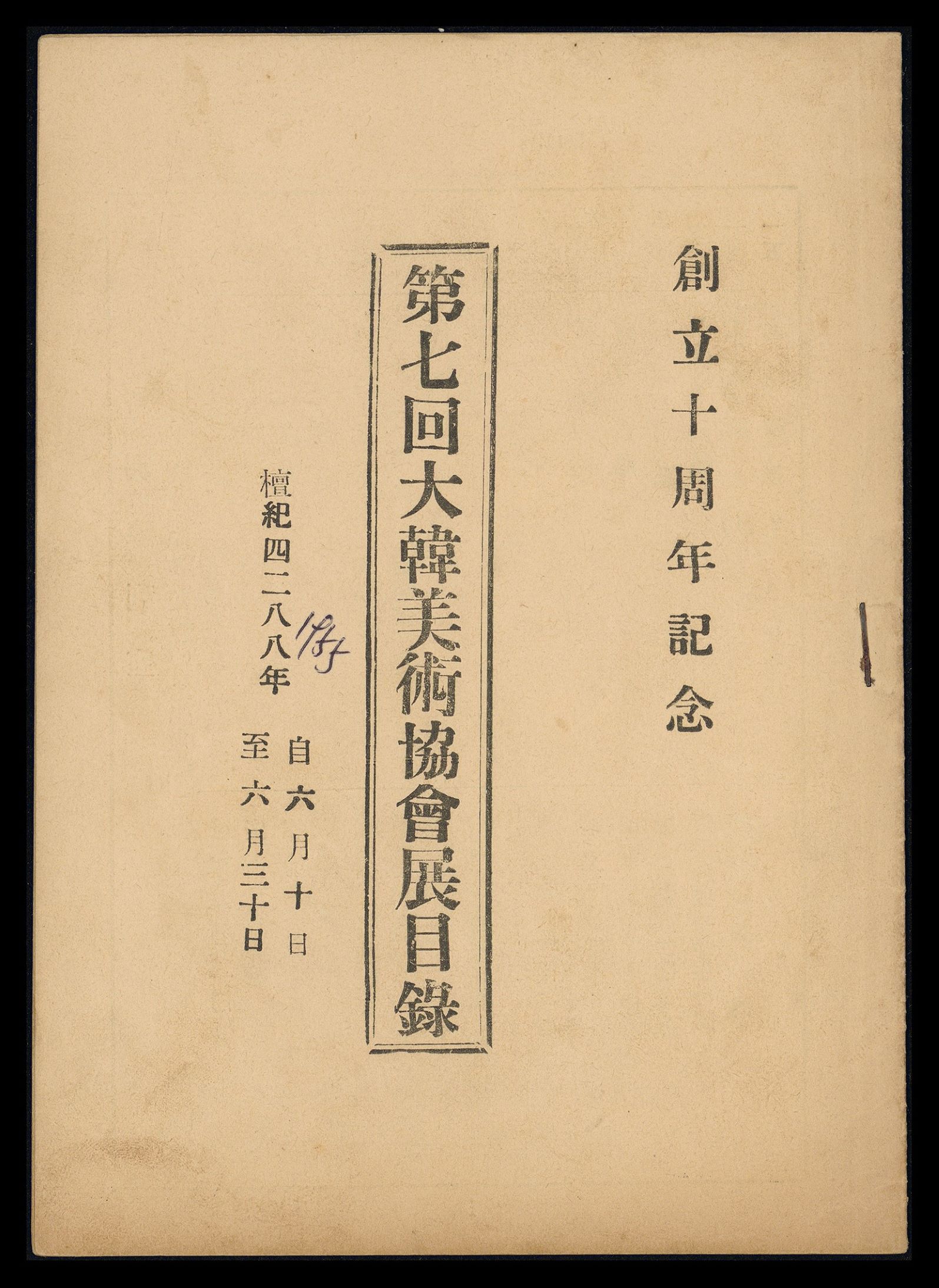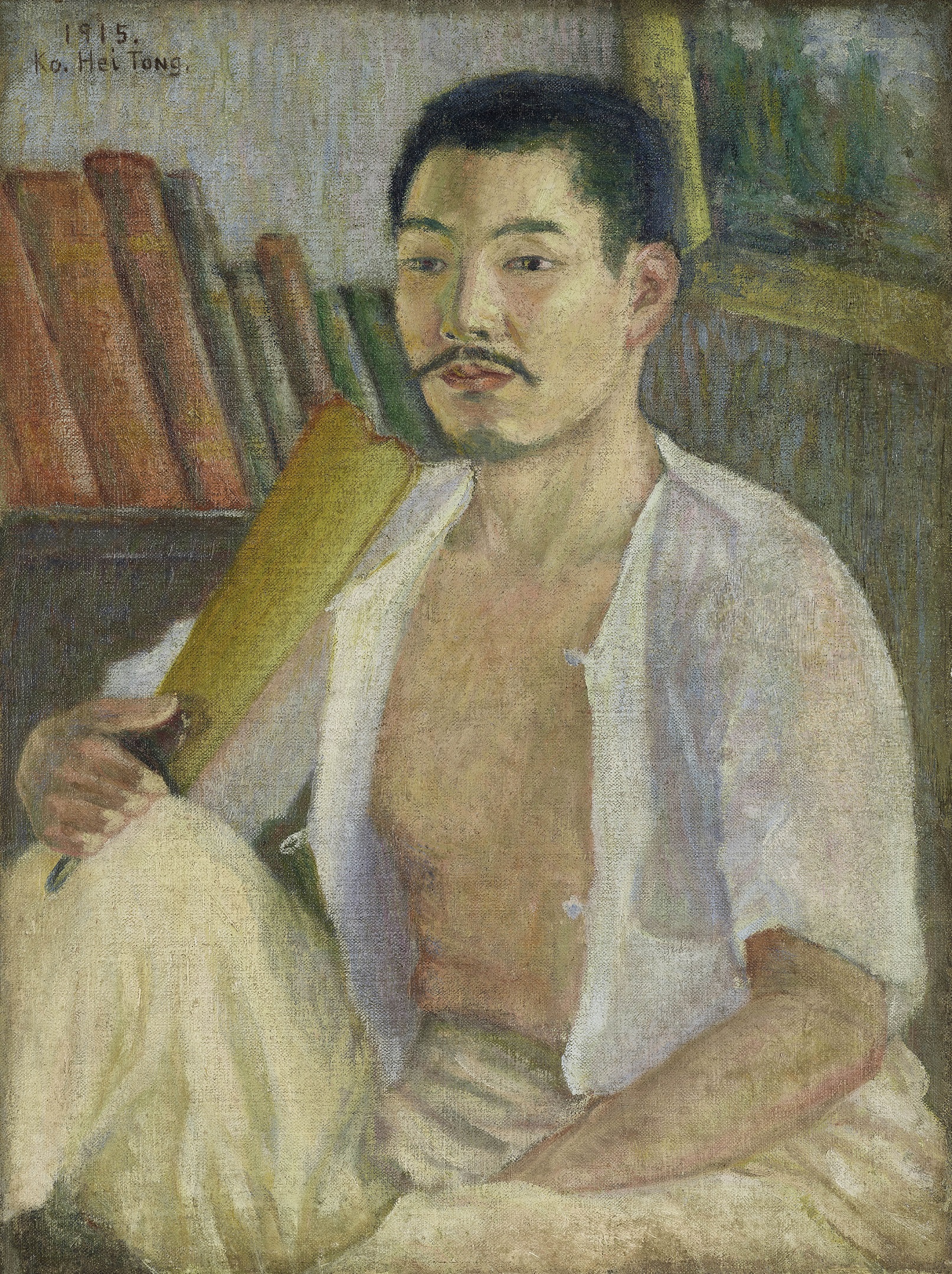
The First Korean Artists Association Exhition, Leaflet, 1955. Image provided by Kimdaljin Art Archives and Museum
Korean Artists Association
* Source: Multilingual Glossary of Korean Art. Korea Arts Management Service
Related
-

Chang Louis Pal
Chang Louis Pal (1901-2001) was the first Korean artist of religious paintings and an art educator. He was born into a second-generation Catholic family as the second son of Hwang Lucia and Chang Gibin, who moved from Pyongnam to Incheon and worked at the maritime customs office. He studied under Ko Huidong at Whimoon High School. At the time of graduation, he became a member of the Goryeo Painting Association [Goryeo hwahoe]. In 1920, he enrolled in the Western Painting Department at the Tokyo School of Fine Arts, but in 1921 he moved to the U.S. and studied for a year at the New York National Academy of Design. From 1923 through 1925, he took practical and theoretical art courses provided by the Art Department of the School of Practical Arts at Columbia University’s Teachers College. On their way back home from studying abroad in 1925, he and his older brother Chang Myon stopped at the Vatican and attended the ceremony for the beatification of seventy-nine blessed Korean martyrs. After returning to Korea, Chang participated in the Calligraphy and Painting Association [Seohwa hyeophoe] exhibition and the Mogilhoe Association. At the same time, he focused on creating religious paintings. He served as a teacher at Whimoon High School, Gyeongsin High School, and the Dongseong Commercial School and as the first principal at Gyemyeong Girls’ Commercial Training School. After Korea’s liberation from Japan, he was appointed to the head of the Education Bureau of the U.S. military government. While working there, he established the Art Department within the College of Fine Arts of Seoul National University and became the dean of the College of Fine Arts. He was also influential in art administration, as shown in the establishment of the National Art Exhibition (Gukjeon) and his participation in the Arts Council. In 1950, he founded the Korean Catholic Artists Association; in 1955, he led the formation of Korean Artists Association [Hanguk misulga hyeophoe]; and in 1960, he supervised the design of Hyehwa-dong Cathedral and the production of its sculptures. Among his notable works are Saint Sisters Kim Colomba and Kim Agnes (1925), Fourteen Apostles (1925–1926), a mural for the altar in Myeongdong Cathedral, Saint Kim Daegeon Andrea (1928), Christ Crucified (1941), and The Annunciation (1945), an altar painting at the Convent of the Order of Discalced Carmelite. In 1961, he resigned from his teaching position and was about to be appointed Ambassador Extraordinary and Plenipotentiary to Italy, but his political career was thwarted by the May 16 military coup d'état. After emigrating to the U.S. in 1964, he held a solo exhibition at Shinsegae Gallery in 1976 with his abstract expressionistic works. He died at his home in Pittsburgh, Pennsylvania, on April 8, 2001, five days after celebrating his 100th birthday.
-

College of Arts at Seoul National University
The College of Fine Arts of Seoul National University is located in Sillim-dong, Gwanak-gu, Seoul. According to the Decree on the Establishment of Seoul National University, the College of Art including the Department of Fine Arts and the Department of Music was founded in August 1946 at Seoul National University. The Department of Fine Arts consisted of sub-departments of Painting I, Painting II, Sculpture, and Design. It was organized by Chang Louis Pal and Lee Soonsuk. Chang Louis Pal had served as head of the Education and Management Bureau in the U.S. Army Military Government in Korea (USAMGIK) in Korea since December 1945. Lee Soonsuk assumed practical tasks as an advisor to the art section of the USAMGIK from 1946 when the Education and Management Bureau was changed to the Ministry of Culture and Education. In 1946, there were nine faculty members at the Department of Fine Arts in the College of Art: Chang Louis Pal, Kim Yongjun, Gil Jinseop, and Lee Jaehun as professors; Yun Seung-uk and Lee Soonsuk as associate professors; and Kim Whanki, Chang Woosoung, and Lee Byeonghyeon as assistant professors. However, after the incident of Korean students and professors’ protest against the U.S.’s attempt to merge several colleges and universities into a single university, Kim Yongjun, Gil Jinseop, and Kim Whanki resigned. In 1954, the College of Art was reorganized into the College of Fine Arts with three departments of painting, sculpture, and applied art. The Department of Aesthetics, which had temporarily belonged to the College of Fine Arts since 1948, was transferred to the College of Liberal Arts and Sciences in 1960. In 1963, according to the relocation plan of the Seoul National University main school building, the College of Fine Arts was moved to the former veterinary department building in Yeongeon-dong, Jongno-gu. In 1972, it was moved to the liberal arts department building in Hagye-dong, Seongbuk-gu, and then in 1976, to the current Gwanak campus. In 1981, the three departments of painting, sculpture, and applied art were reorganized into the five departments of Eastern painting, Western painting, sculpture, crafts, and industrial art. In 1989, the Department of Industrial Art was renamed the Department of Industrial Design, and in 1999, the Department of Crafts and the Department of Industrial Design were merged into the School of Design. Currently, the College of Fine Arts consists of the Department of Oriental Painting, Department of Painting, Department of Sculpture, Department of Craft, Department of Design, and Interdisciplinary Programs.
Find More
-

Great Korean Art Association
An art association that formed in 1948, when the Korean Art Association [Joseon misul hyeophoe], which was established in 1945, reformed in parallel with the establishment of the new Korean government. Following independence, the organization reformed and expanded primarily to foster solidarity and anti-communist sentiment in artists, and held the inaugural Great Korean Art Association Exhibition. In June 1961, the association closed officially with the government's comprehensive art institute reformation policy, and in December that year, the association merged into the Korean Fine Arts Association [Hanguk misul hyeopoe].
-

Ko Huidong
Ko Huidong (1886-1965, pen name Chungok) was born in Seoul and graduated from Hanseong French Language School. He worked as an interpreter and was appointed as a government official of the Korean empire. In 1907, he began to learn painting from An Jungsik and Cho Seokjin. He visited Japan to study art in 1909 and later attended Tokyo School of Fine Arts where he studied oil painting. The advent of Japanese colonization in 1910 caused him to lose his position as a government official and he became a student. He graduated in 1915. A Self-portrait with Jungjakwan (traditional Korean hat for government officials) reflected his self-consciousness of his former role as a government official of the Korean empire. His oil paintings, such as A Self-portrait with Durumagi (traditional Korean overcoat) or A Self-portrait Holding a Fan, are currently owned by the MMCA in Gwacheon. In the 1920s, he stopped creating Western paintings due to the lack of understanding of people around him. After this period, he focused on Eastern paintings depicting subjects such as Geumgangsan Mountain or other nativist landscape themes. He organized the Calligraphy and Painting Association [Seohwa hyeophoe] with An Jungsik, Cho Seokjin, and Lee Doyoung and worked as a secretary of that Association's exhibitions. He was acquainted with numerous other artists and he actively participated in political activism in the modern painter’s circle in Korea. Following the example of his father Ko Yeongcheol, a member of Yukgyo Poetic Gathering [Yukgyo sisa], he also interacted with other artists, such as Oh Sechang. He helped to organise artists as a chair of the Great Korean Art Association [Daehan misul hyeophoe] and later was appointed as a senator. In 1954, He was selected as the first chairman of the National Academy of Arts. His universal significance can be seen in his crucial contribution to the establishment of the first association of Western painting artists and modern artists in Korea.






